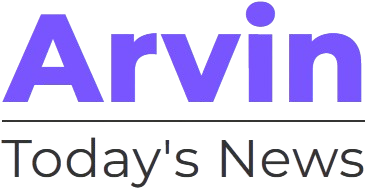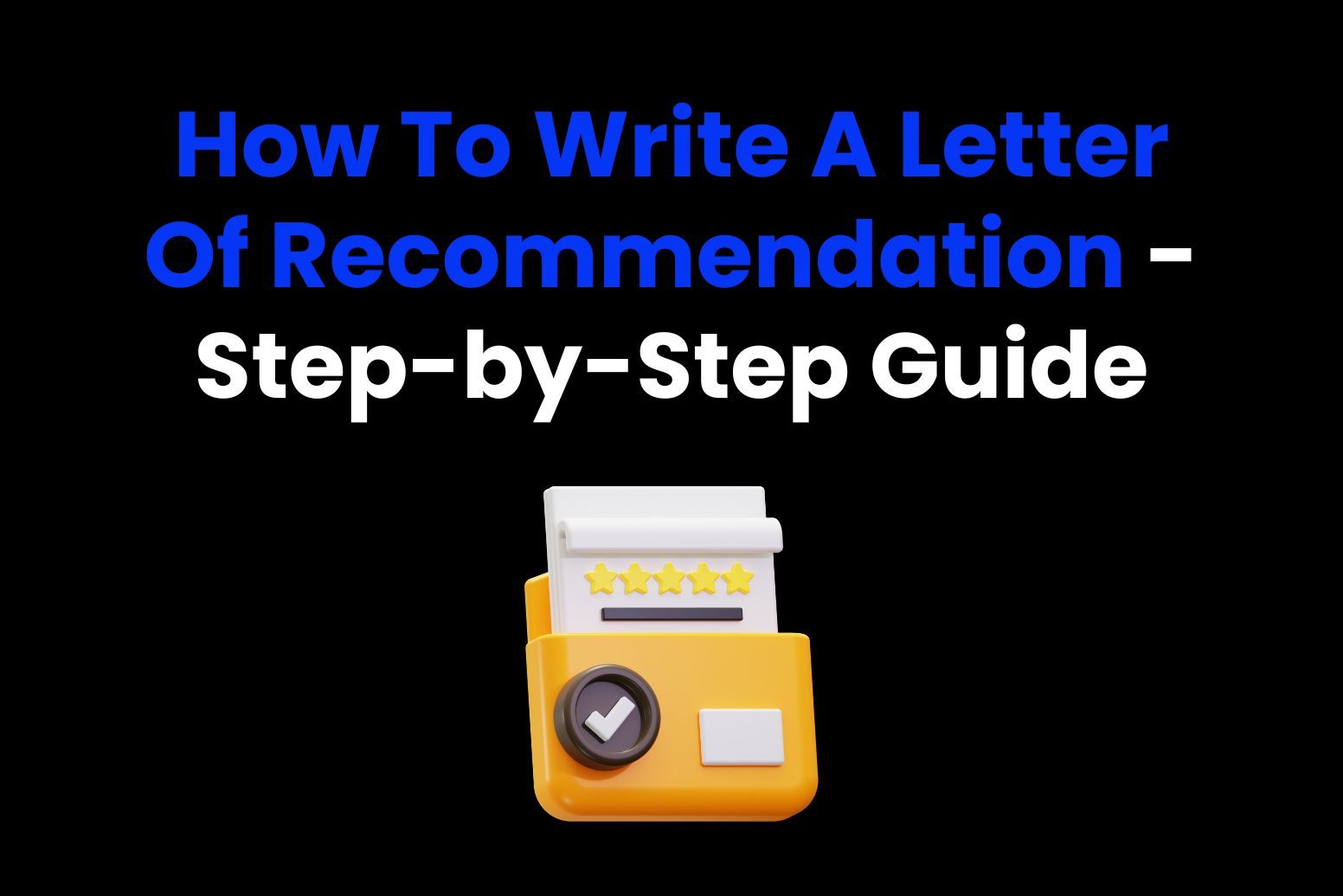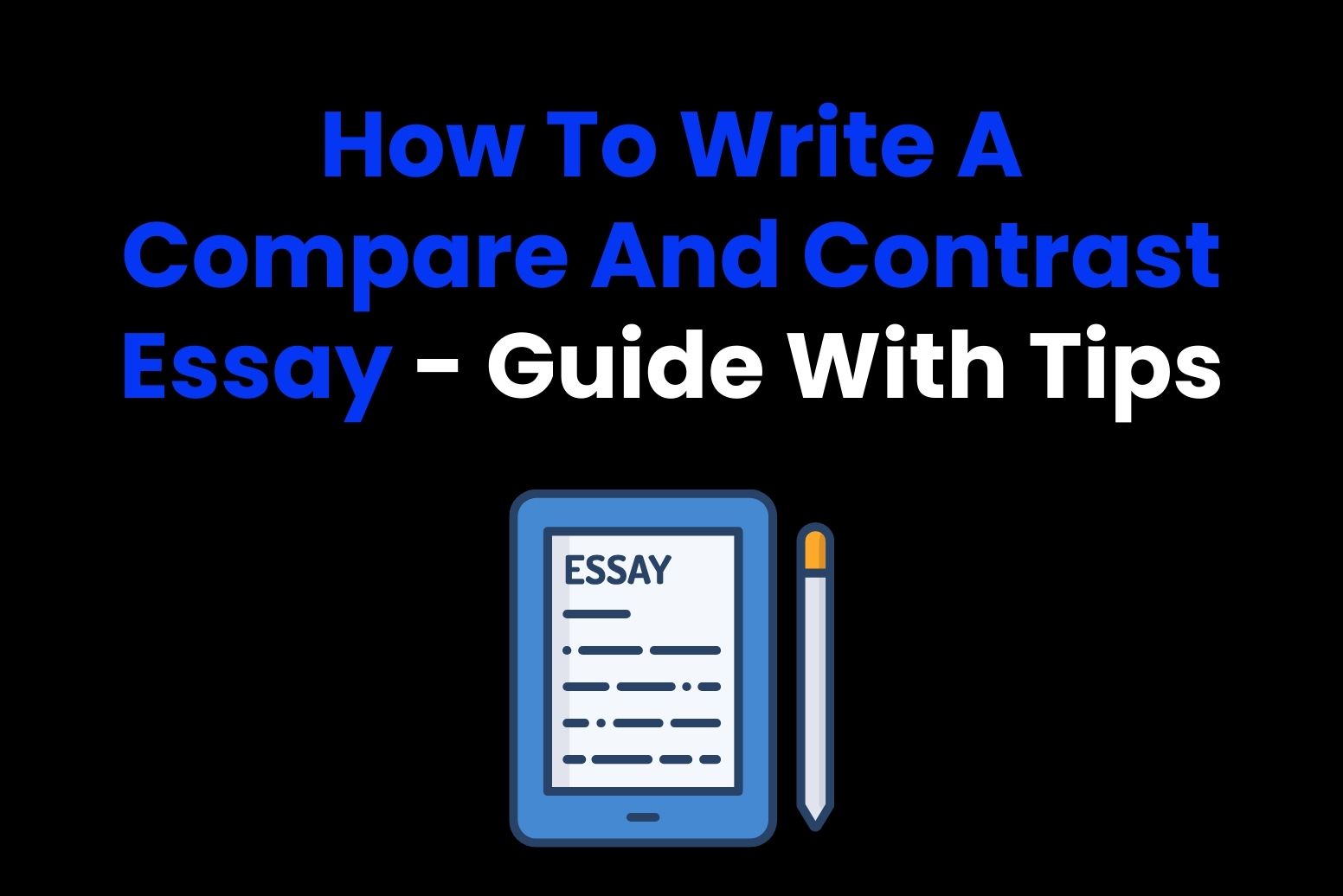Have you ever been asked how to write a letter of recommendation and felt overwhelmed? We know how you feel when you ask yourself, “How to write a letter of recommendation that doesn’t let the other person down?”
You’re probably wondering, “What do I say? How do I make it sound professional but not like I’m just reading from a script? And how do I make sure the person reading it will actually care?” Don’t worry; we’ve got your back!
In this article, we will take you step-by-step through writing a recommendation letter that sounds authentic and compelling. Ready to help someone get that job, scholarship, or acceptance letter? Let’s learn how to write a letter of recommendation!

What Is A Letter Of Recommendation?
A letter of recommendation is a written endorsement where you vouch for someone’s skills, qualities, and character. It’s your way of saying, “Hey, this person is amazing, and here’s why you should believe me.” Here’s where a letter of recommendation is commonly used for:
- Job Applications: Companies often require these to see if someone’s skills are legit.
- College Admissions: Universities love hearing about applicants from someone who knows them well, and most universities can ask for up to 3 recommendation letters as well.
- Scholarship Applications: A good recommendation letter can help someone stand out from the competition and increase their chances of winning a scholarship.
- Awards: This gives the decision makers that “extra push” when deciding who’s actually deserving of an award.
Decision-makers often read these letters with one question in mind: “Is this person worth the investment?” Your job is to help them say “yes” confidently.
Why Do Recommendation Letters Matter?
Before you just whip up a few sentences, know that it can mean the whole world to someone else. Here’s why a good letter of recommendation matters:
- Credibility Boost: Think of it as a personal stamp of approval. When someone reads a glowing recommendation from someone they trust (that’s you!), they’re much more likely to take that person seriously. It’s like saying, “Hey, I’ve worked with this person, and trust me—they’re the real deal!”
- Human Element: Sure, your resumes list skills and experience, but they don’t show how someone works with others or handles challenges. That’s where you come in, with your letter of recommendation, of course. You’re painting a picture of the person beyond the bullet points, and it’s actually very helpful.
- Differentiation: Let’s face it—most candidates applying for a tech analyst will have similar qualifications, like a Bachelor’s in Technology or maybe a Master’s, right? This stands true for almost every field. Hence, a strong recommendation letter is like the secret sauce that can make your candidate stand out from the crowd.
So, don’t just toss off a few lines. You’re helping to shape the future of the person you’re recommending! (No pressure, though, right?)
Are You the Right Person to Write This Letter?
Before you start, pause and consider: are you the best person for this job? Being honest about your ability to know how to write a letter of recommendation isn’t just good for you but also fair to the person who asked.
Questions To Ask Yourself:
Here are a few questions you should ask yourself before you begin:
- Do I know this person well enough to provide meaningful insights about them?
- Can I highlight specific examples of their skills, achievements, or character?
- Do I have the time and willingness to write a thoughtful letter?
If you answer “no” to any of these, it’s better to gracefully decline than to write a letter that is of no help to them. Saying no upfront saves everyone’s time!
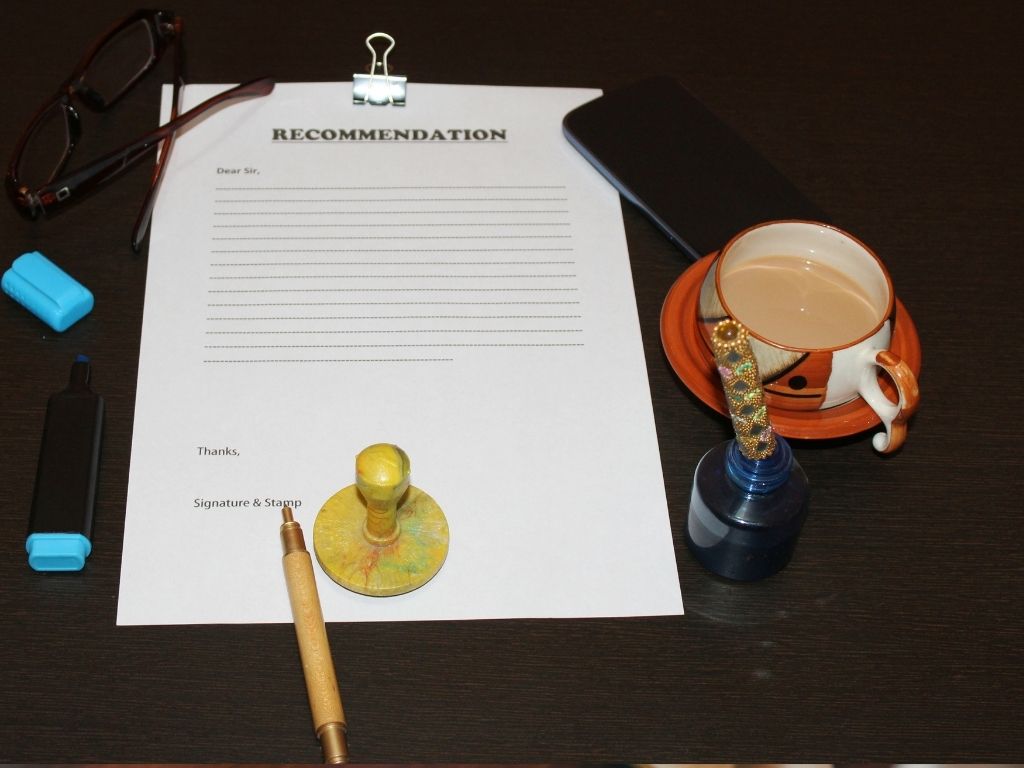
Gather Your Tools And Information
The best recommendation letters are tailored to the applicant and not templates from the internet. To make your letter stand out, you’ll need to gather some key information:
Questions To Ask The Applicant
Here are a few questions you should ask the applicant before you begin writing a recommendation letter for them:
- Purpose: Is this letter for a job, college application, or something else? This will help you decide the tone and content depending on the goal.
- Audience: Who will be reading this letter? A hiring manager? A scholarship committee? Knowing your audience helps you understand their concerns better so that you can tailor your tone accordingly.
- Key Qualities: What skills, traits, or accomplishments should I highlight? Ask the applicant about the qualities they want to highlight.
- Supporting Materials: A resume, portfolio, or list of achievements can provide helpful context, so ask the applicant to share them with you.
For example, if your coworker is applying for a leadership role, you’ll want to focus on their ability to manage teams, resolve conflicts, and inspire others. On the other hand, if it’s a scholarship application, you might emphasize their work ethic and impact on others.
Pro Tip:
Ask the applicant to share specific achievements they’re proud of or times when they made an impact. This gives you ready-made material for anecdotes, which can make your letter more vivid and memorable.
Key Components Of A Recommendation Letter
Here are the key writing strategies of a recommendation that will help you in how to write a letter of recommendation:
Your Relationship With The Candidate
Think of this as the “How We Met” story. The reader needs to know why your opinion matters and what gives you the authority to sing this person’s praises.
Did you manage them? Teach them? Work on a crazy project together where you bonded over late-night deadlines and vending machine snacks? Share the context to help the reader understand your connection.
Specific Achievements Or Skills
Here’s where the magic happens. Skip the generic fluff like “They’re hardworking” or “They’re a team player.” Everyone says that, and frankly, it’s not good enough. Instead, back up your claims with concrete examples. Think of moments that highlight their skills, work ethic, or creativity.
Specific examples don’t just prove they’re great—they show how they’re great. Plus, anecdotes make your letter memorable. People love a good story, even if it involves fixing a coffee machine.
Tie It To The Opportunity
Now that you’ve dazzled the reader with examples, it’s time to answer the big question: “Why does this matter for the role/program they’re applying for?” Show how the person’s skills and experiences align with what’s needed. This is the part where you prove they’re not just amazing—they’re perfect for the opportunity. You’re showing the reader how the person’s unique qualities fill the gaps and check the boxes for what they’re looking for.
A Strong Closing Endorsement
This is your mic drop moment. Wrap up your letter with enthusiasm, confidence, and a clear message that says, “This person is the real deal, and you’d be lucky to have them.” Keep it short but impactful, and end with an offer to chat further if needed.
It leaves a lasting impression and keeps the door open for follow-up questions. Plus, ending with confidence shows that you mean every word you wrote. Seal the deal!

How To Write A Letter Of Recommendation Step-By-Step
Now, it’s time to take the structure we discussed above and turn it into a complete letter. Here’s a step-by-step guide, along with examples of how to write a letter of recommendation that hits the spot:
The Opening
Start with a strong opening that establishes who you are, how you know the applicant, and why you’re writing.
Example:
“It is my absolute pleasure to recommend Adam for his new role. I’ve had the privilege of working closely with Adam as his professor. Over the past 2 years, I’ve been consistently impressed by Adam’s leadership skills, creativity, and dedication to work.”
Why this works: It’s concise, friendly, and immediately builds credibility.
The Body
This is the section where you’ll convince the reader that the applicant is exceptional and deserves all the praise. Let’s break down this section into three mini-sections:
Highlight Key Strengths
You should start by listing the applicant’s most impressive traits. Instead of generic compliments, focus on qualities that align with the opportunity they’re applying for.
Example:
“One of Adam’s standout qualities is his ability to think strategically under pressure. This was evident when we broke down our copier right before an event. However, instead of panicking, Adam already had ordered the prints online.”
Add A Story Or Example
Nothing speaks louder than a real story! Share a time when the applicant faced a challenge or seized an opportunity. Tell us how they handled it. Did they go above and beyond? Were they innovative? What was the outcome? This shows the reader how they’ve applied their strengths in the real world.
Example:
“During a critical project, Adam took the initiative to organize a last-minute meeting to solve a major issue. Thanks to his quick thinking and leadership, we completed the project ahead of schedule and exceeded our client’s expectations.”
Connect The Dots
Wrap up the body by tying everything back to the opportunity they’re applying for. Why does this matter? Show the reader how these strengths make the applicant the perfect fit for the role, school, or scholarship.
The Closing
Your closing is the perfect opportunity to make one last statement about your trust in the applicant. This should be confident, and leave no doubt in the reader’s mind that you wholeheartedly support the applicant.
Example:
“Adam has consistently shown the kind of critical thinking skills that are crucial for working in healthcare. I have no doubt that his talent will allow him to excel and make a significant impact in The Herbal Corporation”.
Don’t just end the letter and walk away. Offering to provide more details shows that you’re committed to supporting the applicant fully. Finally, make sure your sign-off is warm and sincere. Your tone should match the enthusiasm of your endorsement. This adds a personal touch, showing you’re not just checking a box.
Example:
“Please don’t hesitate to contact me if you need any additional information. I am excited to see all that Adam will accomplish, and I am certain he will make an outstanding contribution to The Herbal Corporation.”
How To Write A Letter Of Recommendation For Different Scenarios
A one-size-fits-all approach doesn’t work for recommendation letters. This is because each scenario has its own set of expectations and needs. Here’s how you can tailor your recommendation letter to your situation:

For Jobs:
When writing a recommendation letter for a job, the employer wants to know if the applicant will be a good fit for the role and contribute to the company’s success. So, the focus should be on the applicant’s professional traits, such as skills, work ethic, and results. It’s important to emphasize how they’ve demonstrated these qualities in the workplace.
Example:
“As a software developer, Emily consistently demonstrated technical expertise, including her deep understanding of JavaScript and Python. She played an integral role in developing a mobile application that increased user engagement by 40%.”
For College Admissions:
When tailoring a recommendation letter for college admissions, you need to make sure the tone and content are more holistic. Colleges aren’t just interested in test scores or academic achievements. They want to know who the applicant is as a person, how they engage with others, and how they’ll contribute to the campus community.
Example:
“Amanda’s passion for environmental science goes far beyond the classroom. She spent her summers volunteering at local conservation projects, working on hands-on research to deepen her understanding.”
For Scholarships Or Grants:
For scholarship or grant recommendations, your letter should focus on why the applicant deserves financial support. Talk about how they’ll use the opportunity to achieve their goals. Scholarships are often awarded to those who have shown dedication to their studies, so discuss the applicant’s academic achievements and their passion for learning.
Example:
“Emma’s dedication to her studies, despite financial hardships, is a testament to her perseverance. With your scholarship, she will be able to focus on her studies full-time and pursue her dream of becoming a physician. This way, she can ultimately give back to underserved communities like her own.”
How To Write A Letter Of Recommendation (With Help)
Do you think writing a recommendation letter sounds really tough to you? Well, why don’t you get some help? No, don’t ask for help from another busy professor who’ll straight up refuse to offer any assistance, but instead, ask an AI writing assistant. Arvin AI is an absolutely free Chrome extension powered by GPT-4o, Gemini 1.5, Llama 3.1, Claude 3.5, SD, and DALL-E 3. It can help you with all sorts of writing and research, but today, we’re going to tell you how to write a letter of recommendation using Arvin AI. Here we go:
Step 1:
Go to https://arvin.chat/, and add it to Chrome or download the web app for free.
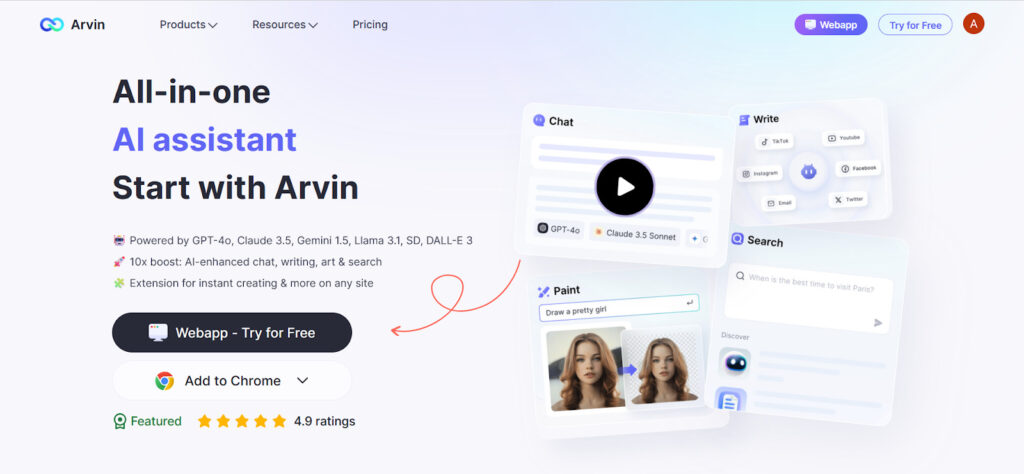
Step 2:
Tell Arvin AI everything you know about the applicant, the purpose of the letter, and any details you want to be mentioned in the letter.

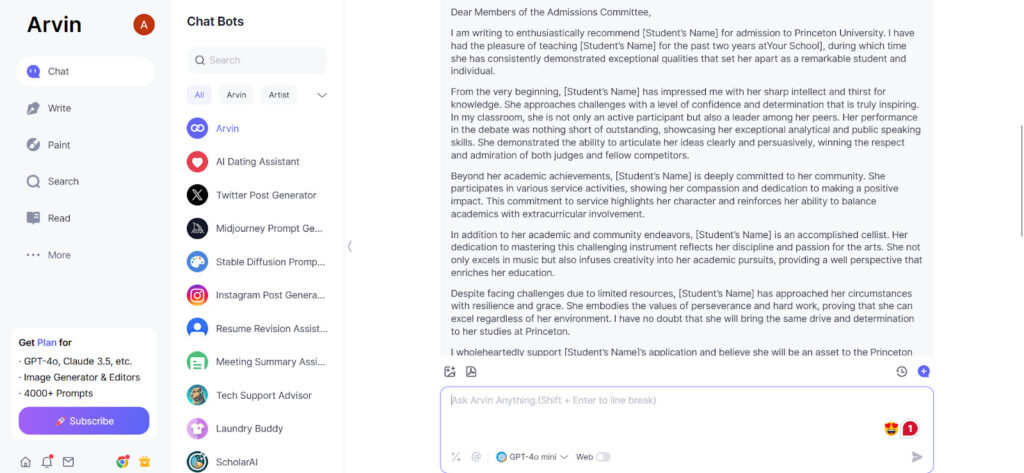
Step 3:
Tweak the letter according to your student, or give Arvin AI recommendations on how to improve the letter.
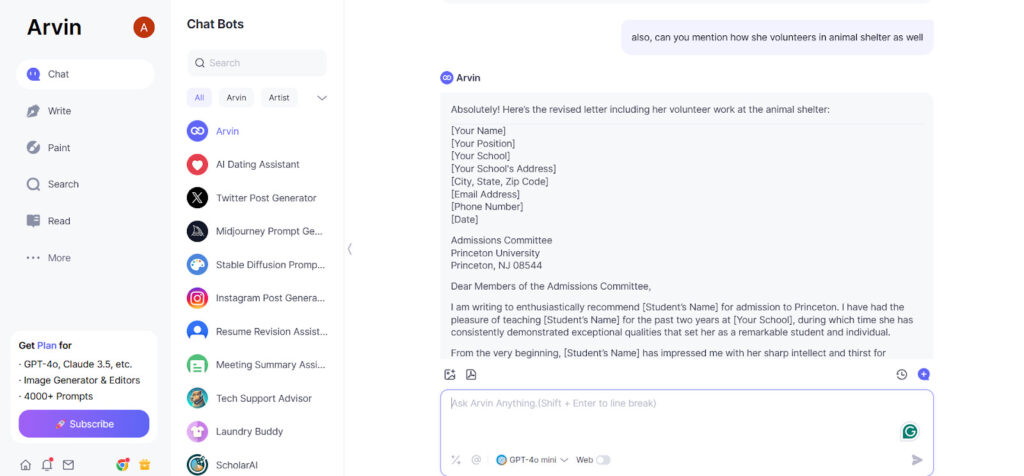
And there you have it! Feel free to make changes and tailor them according to your student’s profile. You can also try other AI letter writers to get different options.
FAQS About How To Write A Letter Of Recommendation
Here are a few of the most frequently asked questions about how to write a letter of recommendation:
How long should a letter of recommendation be?
A letter of recommendation should generally be one page in length or about 300 to 400 words. This length ensures that you provide enough detail to be convincing but also keeps the content focused and readable.
What if the applicant has no experience in the field they’re applying for?
If the applicant is applying for a role or program outside of their usual experience, focus on transferable skills. Look for qualities and experiences that may apply to the new role, even if they’re from a different context. These could include communication, problem-solving, teamwork, or leadership.
Should I include weaknesses in a letter of recommendation?
Honestly, no one wants to read about weaknesses in a letter of recommendation unless they specifically ask for it (and that’s pretty rare). The goal is to highlight the person’s best qualities, not drag them down. But if you absolutely have to address a weakness, keep it constructive and show how they overcame it.
The Bottom Line
Now you know exactly how to write a letter of recommendation—and hopefully, it feels a lot less daunting than when you started. Remember, this isn’t about writing the next Great American Novel; it’s about showcasing someone’s strengths in a way that’s clear, genuine, and compelling. The fact that they trusted you with this task says a lot about how they value your opinion. So trust yourself and write from the heart. And if you’re stuck, feel free to get help from Arvin AI!
